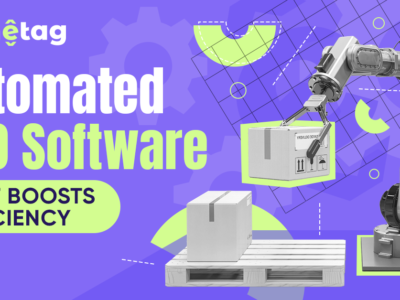
In today’s fast-paced digital world, effective management of digital assets is crucial for businesses of all sizes. With the increasing volume of digital content being produced, the need for a robust Digital Asset Management (DAM) system has never been more apparent. Adobe Experience Manager (AEM) is a leading solution in this space, offering a comprehensive suite of tools designed to streamline the management of digital assets. But is AEM truly the best option for managing your digital assets? Let’s explore the capabilities, benefits, and potential drawbacks of AEM to determine if it is the right choice for your organization.
Understanding Adobe Experience Manager
Adobe Experience Manager is part of Adobe’s broader Experience Cloud, which includes various solutions for content management, marketing, and analytics. AEM specifically focuses on providing a centralized platform for creating, managing, and delivering personalized digital experiences across various channels. It offers powerful DAM capabilities, allowing businesses to store, organize, and distribute their digital assets efficiently.
Key Features of Adobe Experience Manager
- Centralized Asset Repository: AEM provides a centralized repository where all digital assets can be stored, categorized, and easily retrieved. This centralization ensures consistency and reduces duplication, making it easier to manage large volumes of content.
- Advanced Metadata Management: One of AEM’s strengths is its robust metadata management system. It allows users to add detailed metadata to assets, enhancing searchability and enabling more efficient asset retrieval.
- Integration with Adobe Creative Cloud: AEM integrates seamlessly with Adobe Creative Cloud applications like Photoshop, Illustrator, and InDesign. This integration facilitates a smoother workflow for creative teams, allowing them to directly upload and manage assets from their design tools.
- Automated Workflows: AEM offers customizable workflows that automate repetitive tasks, such as asset approval and publishing. This feature helps streamline processes and ensures that content is delivered quickly and efficiently.
- Dynamic Media Delivery: AEM’s dynamic media capabilities allow businesses to deliver optimized images and videos across different devices and channels. This ensures a consistent and high-quality user experience.
- Version Control and Audit Trails: AEM keeps track of different versions of assets and provides detailed audit trails. This is particularly useful for organizations that require strict compliance and accountability.
Benefits of Using Adobe Experience Manager
Improved Efficiency and Productivity
AEM’s centralized asset repository and automated workflows significantly enhance efficiency and productivity. By reducing the time spent searching for assets and automating repetitive tasks, teams can focus on more strategic activities.
Enhanced Collaboration
The seamless integration with Adobe Creative Cloud and other third-party applications fosters better collaboration among creative, marketing, and IT teams. This collaborative environment ensures that all stakeholders can access and work on assets in real-time.
Scalability
AEM is designed to handle large volumes of digital assets, making it a scalable solution for growing businesses. Whether you are a small business or a large enterprise, AEM can accommodate your asset management needs.
Personalized Customer Experiences
With AEM’s robust content management capabilities, businesses can deliver personalized experiences to their customers. By leveraging metadata and dynamic media delivery, companies can tailor content to specific audiences, enhancing engagement and satisfaction.
Potential Drawbacks of Adobe Experience Manager
High Cost
One of the most significant drawbacks of AEM is its cost. As a premium solution, AEM comes with a substantial price tag that may be prohibitive for small businesses or startups. The licensing fees, along with the costs associated with implementation and ongoing maintenance, can add up quickly.
Complexity
AEM’s extensive features and capabilities come with a learning curve. For organizations without in-house expertise, the complexity of AEM can be a challenge. Proper training and possibly hiring experienced professionals may be necessary to fully leverage AEM’s potential.
Implementation Time
Implementing AEM can be time-consuming. The setup process, including integration with existing systems and customization to fit specific business needs, can take several months. This extended implementation period may delay the realization of benefits.
Comparing AEM with Other DAM Solutions
To determine if AEM is the best option, it’s essential to compare it with other popular DAM solutions available in the market.
Bynder
Bynder is a user-friendly DAM solution known for its intuitive interface and ease of use. It offers robust metadata management, automated workflows, and strong collaboration features. While it may not have the extensive integration capabilities of AEM, Bynder is a cost-effective option for businesses looking for a straightforward DAM solution.
Widen Collective
Widen Collective is another powerful DAM platform that offers a range of features, including advanced search capabilities, analytics, and integration with various marketing tools. It is highly customizable and scalable, making it a strong competitor to AEM. However, Widen Collective may also come with a higher cost, like AEM.
Canto
Canto is a DAM solution that emphasizes simplicity and ease of use. It offers core DAM functionalities like asset organization, metadata management, and collaboration tools. Canto is an excellent choice for small to medium-sized businesses that need a reliable DAM solution without the complexity and cost of AEM.
Making the Right Choice for Your Business
Choosing the right DAM solution depends on several factors, including your business size, budget, and specific needs. Here are a few considerations to help you make an informed decision:
- Assess Your Needs: Determine the volume and types of digital assets you need to manage. Consider the complexity of your workflows and the level of integration required with other systems.
- Budget Constraints: Evaluate your budget and consider the total cost of ownership, including licensing fees, implementation costs, and ongoing maintenance.
- Scalability Requirements: Consider your business growth plans and choose a solution that can scale with your needs. AEM is highly scalable, making it suitable for large enterprises, while solutions like Canto may be more appropriate for smaller businesses.
- User Experience: Consider the user experience for your team. A solution that is too complex or difficult to use may hinder productivity. Evaluate the training and support available for the chosen DAM system.
Conclusion
Adobe Experience Manager is undoubtedly a powerful and comprehensive DAM solution that offers numerous benefits for managing digital assets. Its advanced features, seamless integration with Adobe Creative Cloud, and scalability make it a strong contender for businesses looking to enhance their digital asset management capabilities. However, the high cost and complexity of AEM may not be suitable for all organizations. By carefully assessing your needs, budget, and scalability requirements, you can determine if AEM Content Management services is the best option for your business or if a more straightforward DAM solution like Bynder, Widen Collective, or Canto would be a better fit. Ultimately, the right choice will depend on your unique circumstances and strategic goals.










